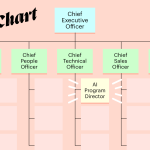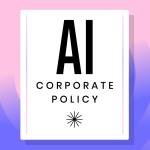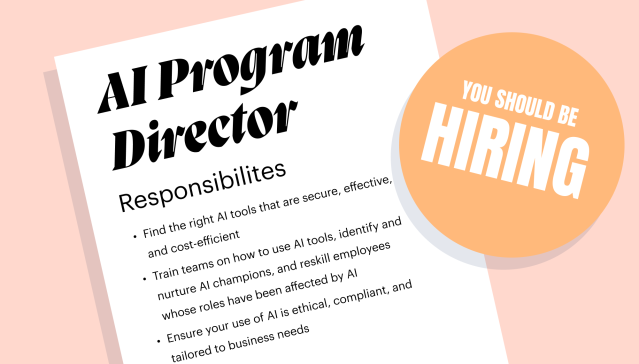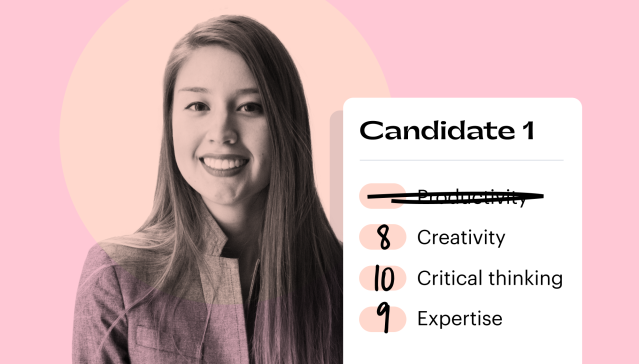Enterprise transformation
– 8 min read
Supporting existing employees in the face of AI disruption
Embrace change; evolve, don't replace

As ATM use became widespread by the 1980s, the role of tellers was called into question. If bank customers could withdraw their own money from their accounts, would banks still need as many tellers?
As it played out, there wasn’t a sudden rise in teller unemployment. Instead, many tellers took on more meaningful roles, such as discussing financial products and services with customers — relationship-based work that couldn’t be replicated by a machine.
This “re-imagining” of roles has played out for decades across industries as they face disruption by technology. Companies that are committed to upskilling and reskilling existing employees will come out ahead. They have a workforce that already understands the industry and company, making it easier to transition to a new business model than hiring from the outside.
On the flip side, other companies hold back from embracing new technology, out of fear that their workforces will be displaced. This also proves disastrous, as technology never slows or stops: these companies will eventually find themselves behind their competitors.
The same will hold true as AI becomes more ubiquitous in our everyday lives. Companies can embrace technological change while being mindful of its impact on existing employees. They see it as an opportunity to evolve rather than replace, and put strategies in place to help employees be successful.
- Companies that are committed to upskilling and reskilling existing employees will come out ahead.
- Companies can embrace technological change while being mindful of its impact on existing employees.
- AI is quickly going to be an augmentation layer, embedded in every corporate workflow and application.
- The further your company gets into AI, the more you’ll need to rely on employees that have experience with AI tools.
Understand AI’s ever-evolving role in the workplace
While AI technology has been around for decades, its evolution (particularly with large language models or LLMs) has exploded over the past year. The technology is developing at a rapid pace. AI is quickly going to be an augmentation layer, embedded in every corporate workflow and application. Nearly every day, software companies are announcing their new or forthcoming AI capabilities.
While it might feel overwhelming, companies can’t take a “wait and see what happens” approach. They need to strategize about AI today, starting with internal roles that’ll oversee the company’s use of AI. Much like a CTO drives a company’s approach to and implementation of technology, an AI program director will focus on research, governance, and employee training around AI.
The AI program director can lead an internal strategy team that explores AI uses cases across departments. The use cases will vary — sales and customer support won’t use AI in the same way. Nor will different industries like financial services and retail. The AI strategy team should have representatives across the organization that understand each department’s specific needs and workflows and industry requirements.
As the strategy team thinks about AI, it’ll change the way your company evaluates vendors. AI should be at the forefront of how you evaluate new tools to use internally. At a minimum, the vendor should have information about AI features they’re planning, if not already released. Beyond that, any vendor should pass your employees’ tests for quality, your technology team’s requirements for data security, meet any legal or compliance requirements, and be enterprise-ready.

Learn more about the emerging role of the AI program director.
Read AI program director: The role every company should hire for today
Clearly communicate your principles on AI usage to employees and customers alike
There’s almost zero chance that your employees aren’t already thinking about AI, especially with the constant barrage from the media that “AI will replace your job!”
Even if you haven’t yet implemented AI, your game plan should be clearly communicated: both to your employees and your customers. No one should be left wondering about your company’s stance on AI.
Talk to your employees about the company’s direction as you bring on AI-focused roles and explore AI-powered tools. This is a great time to discuss upskilling or reskilling roles that’ll be most impacted by AI. You may find that some employees are very excited about AI (and these will be great candidates for an internal strategy team!)
If AI will impact your business model, either in the products you build or the services you offer, first make sure that employees are clear about the business impact of AI. Then communicate your plans with your customers. Your frontline employees, in particular, should be prepared to address any AI-related questions or concerns from customers.
Customer communication should include:
- Your company’s stance on AI
- How you’re using AI today
- How you plan to use AI in the future
You should also ensure that your AI technologies and AI vendors are transparent about the data used to train its models. Any AI tools you use should also be researched, tested, and vetted to ensure you’re not introducing any biases or discrimination into the workplace. You can’t claim ignorance: regulatory agencies in the United States like the FCC and the Consumer Financial Protection Bureau have warned businesses about using AI tools that cause consumers harm (like discriminatory practices).

Need help developing your corporate AI usage policy?
Look no further: Every company needs a corporate AI policy — here’s your guide to creating one.
As an employer, it’s your job to help employees understand how AI will complement their work. People are hungry for anything that makes their jobs faster. While AI tools are powerful, they’re also nuanced: employees will need to learn the necessary skills to get the most out of them. A corporate AI policy should govern usage, including acceptable uses of AI, plugging sensitive information into AI tools, fact-checking, and more.
Upskill and reskill employees for human-led, AI-assisted work
It’s possible that AI will replace some roles or tasks within roles. Your company should think about upskilling or reskilling impacted employees, and how their roles can focus more on creativity or critical thinking. AI, like any productivity tool, replaces work that’s repeatable. These employees can instead focus on more complex tasks, customer interactions, or other work that benefits the company.
For example, Intuit (makers of QuickBooks and TurboTax) wants to be an AI-driven company. The company offered online courses to employees interested in learning AI, offered by the company’s SVP and chief data officer, Ashok Srivastava. The company also offers apprenticeship programs for non-technical employees and in-person boot camps. In an interview, Srivastava said, “Given the opportunity, I think people have remarkable abilities to grow and change.”

Discover how Intuit uses AI to build a culture of inclusion.
Cultivate AI adoption as a career-changing skillset
Even if you teach employees the specifics of tools that they’ll use for that specific role within your company, they’ll be developing broad skills that can be transported across AI products wherever they work. The further your company gets into AI, the more you’ll need to rely on employees that have experience with AI tools. Questions about AI usage should become part of your hiring and promotion process. Even if a candidate doesn’t have much experience with AI, they should be open to learning and willing to adapt to your company’s use of AI.

Learn more about hiring in the age of AI.
The future of talent: Adapting your hiring practices to the AI workplace
Create a culture that integrates AI into everyday work
We’re on the cusp of an enormous transformation within knowledge work. Exciting as it is, people fear the unknown and right now, there are a lot of unknowns about AI since it is evolving so rapidly.
Take time to help your employees grow their AI skills so your company has a competitive business advantage. Respect their contributions to the company today, while also recognizing that those contributions may change — and help them learn what they need for their roles in the future, even if those roles are different. Find your internal AI champions: the people who’ll support your AI program director and drive excitement among existing employees.
AI will power new ways of thinking. Some employees will use AI creatively, while others can expand once AI replaces the mundane parts of their job. The technology will enable things that weren’t possible previously and companies can (and should) push the technology further and reap more benefits — while still maintaining their commitment and responsibilities to the humans involved.
We surveyed hundreds of enterprise companies about their current and planned use of AI in the workplace. Read the results in our State of Generative AI in the Enterprise report.


